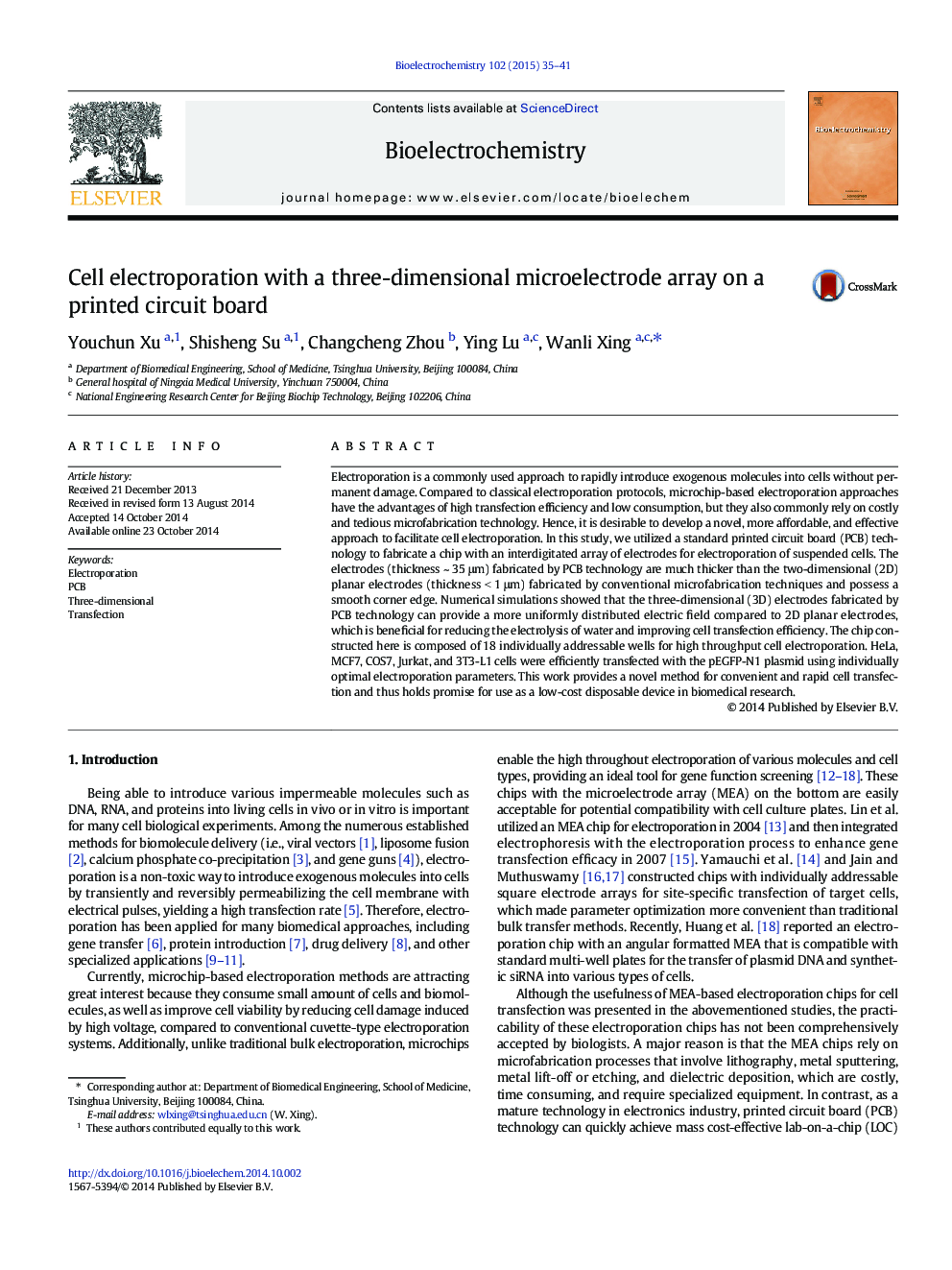| Article ID | Journal | Published Year | Pages | File Type |
|---|---|---|---|---|
| 1267179 | Bioelectrochemistry | 2015 | 7 Pages |
•We fabricate a chip printed circuit board (PCB) technology for cell electroporation.•The electrodes of this chip possess a three-dimensional (3D) structure.•The 3D electrodes provide a more uniformly distributed electric field.•The electroporation rate of this PCB-based chip was superior to the 2D chip.•Five cell types were efficiently transfected with the pEGFP-N1 plasmid.
Electroporation is a commonly used approach to rapidly introduce exogenous molecules into cells without permanent damage. Compared to classical electroporation protocols, microchip-based electroporation approaches have the advantages of high transfection efficiency and low consumption, but they also commonly rely on costly and tedious microfabrication technology. Hence, it is desirable to develop a novel, more affordable, and effective approach to facilitate cell electroporation. In this study, we utilized a standard printed circuit board (PCB) technology to fabricate a chip with an interdigitated array of electrodes for electroporation of suspended cells. The electrodes (thickness ~ 35 μm) fabricated by PCB technology are much thicker than the two-dimensional (2D) planar electrodes (thickness < 1 μm) fabricated by conventional microfabrication techniques and possess a smooth corner edge. Numerical simulations showed that the three-dimensional (3D) electrodes fabricated by PCB technology can provide a more uniformly distributed electric field compared to 2D planar electrodes, which is beneficial for reducing the electrolysis of water and improving cell transfection efficiency. The chip constructed here is composed of 18 individually addressable wells for high throughput cell electroporation. HeLa, MCF7, COS7, Jurkat, and 3T3-L1 cells were efficiently transfected with the pEGFP-N1 plasmid using individually optimal electroporation parameters. This work provides a novel method for convenient and rapid cell transfection and thus holds promise for use as a low-cost disposable device in biomedical research.
